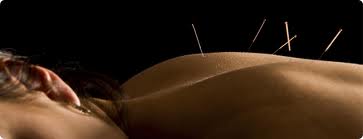What to expect

Treatment
The initial consultation is an hour long. I’ll ask you about your current symptoms as well as your general health, including your lifestyle and your medical history. I’ll also ask some questions about you as a person and what you want from treatment. This is your opportunity to give me the full picture, so I can make the right decisions about how best to treat you. I’ll use Chinese diagnostic methods of feeling your pulse on both wrists and looking at your tongue. I may also do a physical examination of the acupuncture channels on your forearms and lower legs. If you have come for physical problems such as joint pain I will do a physical examination of the area in question.
The acupuncture points are not always close to the part of the body where you experience the problem, for example if you suffer from headaches I may need to insert needles in your hands or feet. I may leave the needles in for up to 30 minutes or I may remove them immediately, depending on the treatment needed.
Each subsequent session will last about 45 minutes. I’ll ask you for feedback on how you have been feeling so we can assess how the treatment is going. I’ll always feel your pulses at each wrist and look at your tongue before treatment.

What does it feel like?
Acupuncture needles are much finer than needles used for injections – as fine as one or two human hairs, so they’re not painful. The aim of the needle is to connect with the circulating Qi and when this happens you may feel a tingling or a dull ache.
Other Traditional Chinese Medicine techniques
As well as needles I may use other techniques within a treatment:
Moxibustion: The herb “moxa” (Artemesia vulgaris) is used to warm the acupuncture point either above or on the skin. Don’t worry this does not burn the skin.
Cupping: Involves placing glass cups on the skin to create a suction. Often used for muscular tension
Gua sha: A plastic or ceramic tool is used to gently scrape the skin. This is often used for muscular tension
Electro-acupuncture: A weak electric current is run through the needles. This is usually used for pain in the same way that a TENS machine is used.
Chinese Tui na massage or acupressure: I may use hands-on therapy to manipulate the energy in the channels or for muscular conditions. This can be useful if you are afraid of needles.
How many treatments will you need?
As treatment is based on the individual, frequency and length of treatment can vary. Treatments are usually weekly at first and some people feel dramatic changes after just a few treatments while others find they need to come for longer. Long-term problems may take longer to improve than acute conditions. Some patients continue to return monthly or less regularly for a top-up, or as a preventative measure.
Can you have acupuncture if you are on medication?
Acupuncture is safe to use in conjunction with conventional treatments. If you are taking medication, it makes sense to tell your doctor that you are planning to have acupuncture. Please also let me know about any medication you are taking as this may affect your response to the acupuncture treatment.
Is it safe?
Acupuncture is one of the safest medical treatments, both conventional and complementary, on offer in the UK. As a member of the British Acupuncture Council I adhere strictly to their Code of Safe Practice. The needles used are single-use, sterile and disposable. Rare responses to treatment can include mild dizziness or minor bruising. Any reactions are unusual and short-lived.
Is it confidential?
Yes, as a member of the British Acupuncture Council I adhere to their Code of Professional Conduct. Anything you tell me during your sessions is completely confidential.
Will you need to get undressed?
There are acupuncture points all over the body and I may need to access areas on your back and front as well as your arms and legs. I will provide a gown or blanket if this is necessary. It is best to wear loose clothing for your acupuncture sessions.